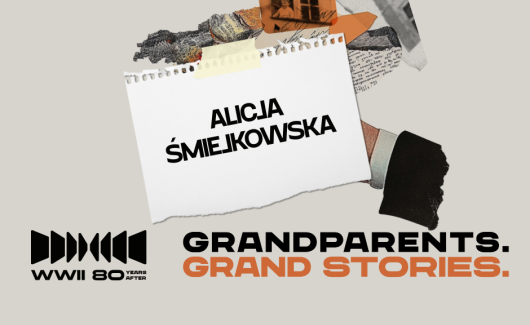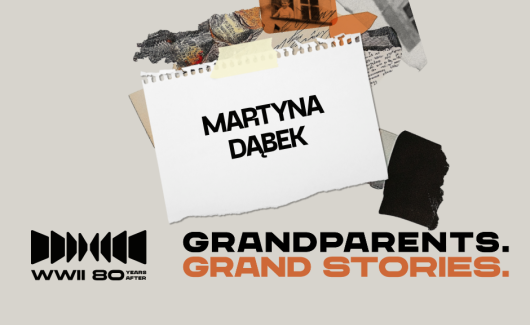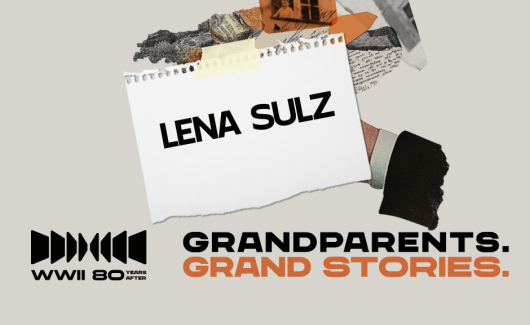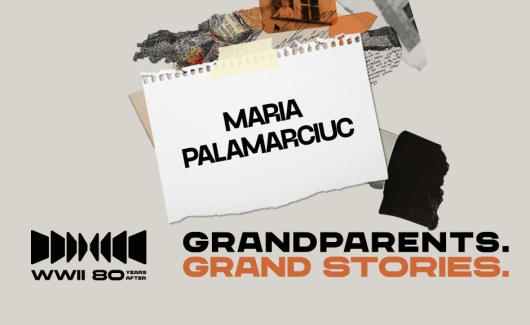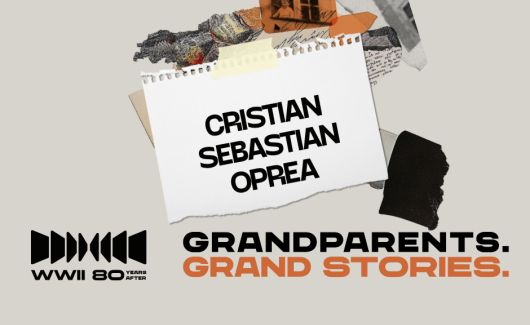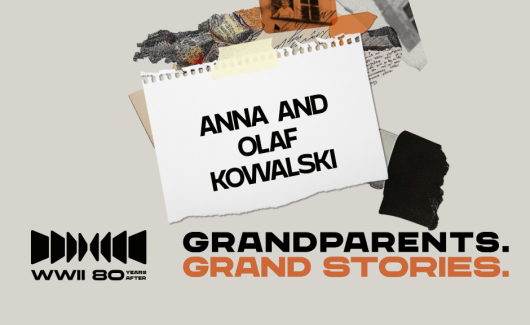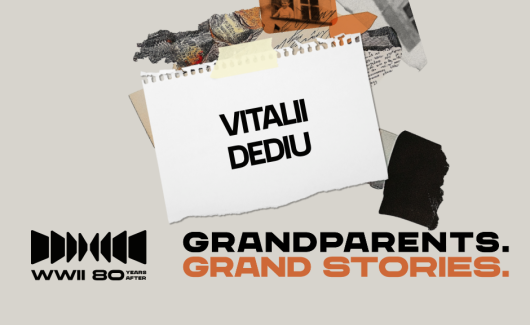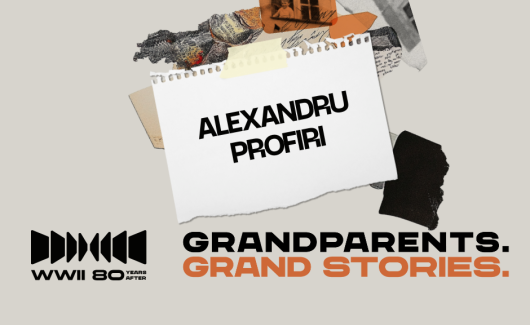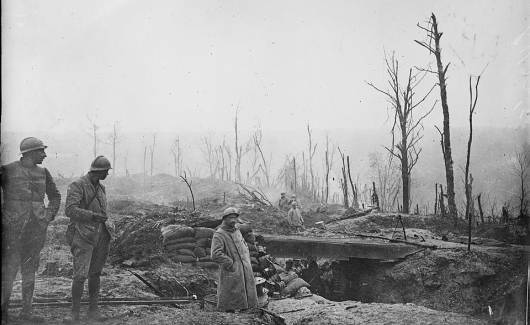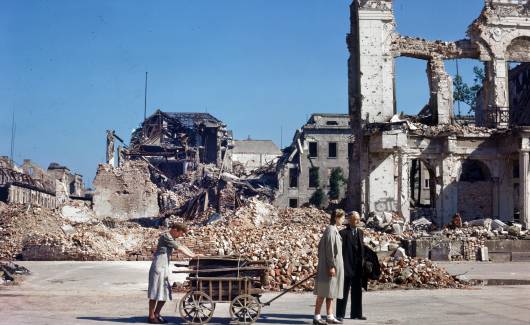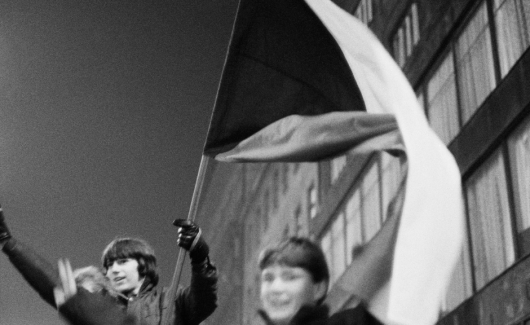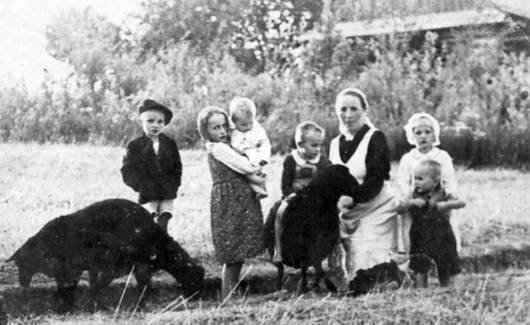Die beiden führenden Politiker, die in den 1940er Jahren den Begriff „Zweiter Dreißigjähriger Krieg“ prägten, waren Winston Churchill und Charles de Gaulle. In dieser Bezeichnung schwingen sowohl autobiografische als auch historische Elemente mit. Beide Männer betrachteten sich als Sieger beider Weltkriege: Sie standen für die siegreichen Armeen und Nationen von 1918 und 1945. Weder der eine noch der andere hatte diesen Erfolg allein errungen, aber beide verkörperten Nationalstolz und Wehrhaftigkeit überaus eindrucksvoll: Sie hatten Deutschland nicht nur einmal, sondern zweimal in die Knie gezwungen.
Unter mangelndem Selbstwertgefühl litten sie ohnehin nicht. So schrieb Churchill bereits 1906 in einem Brief an Violet Bonham Carter, die Tochter des britischen Premierministers Asquith, ihm sei klar, dass wir Menschen alle zerbrechliche Geschöpfe seien. „Wir sind alle Würmer“, bekräftigte er, „aber ich glaube, ich bin ein Glühwurm“. Charles de Gaulle war nüchterner als Churchill, doch dass er sein Land im Zweiten Weltkrieg aus der Niederlage zum Sieg geführt hatte, erfüllte ihn ebenso wie Churchill mit dem Gefühl einer schicksalhaften Bestimmung.
Ihr Stolz auf den Sieg ist gerechtfertigt. Beide waren imposante, gebieterische Gestalten, ein Traum für jeden Karikaturisten – der rundliche Mann mit seiner Zigarre nicht weniger als der hochgewachsene General mit der markanten Nase, die unter dem Képi hervorragte. Beide standen im Zweiten Weltkrieg allein da. Churchill nutzte die englische Sprache als Waffe, als im Mai und Juni 1940 eine deutsche Invasion und damit die britische Niederlage unausweichlich schienen – De Gaulle setzte kämpferisch auf den französischen Stolz, die französische Sprache und Ressourcen der Kolonialmacht als letztes Mittel, um die Hoffnung auf die Zukunft zu stärken.
Beide führten einen imperialen Krieg, um die glanzvolle Größe ihrer Nation wiederherzustellen. Letztlich war das Zerstören der imperialen Träume Deutschlands im Ersten Weltkrieg sowie Deutschlands, Italiens und Japans im Zweiten Weltkrieg jedoch so kostspielig, dass es für Frankreich und das Vereinigte Königreich zum doppelten Pyrrhussieg wurde. Sowohl Churchill als auch de Gaulle erkannten langsam, aber sicher, dass der Preis für den Sieg in Europa die Auflösung ihres geliebten Kolonialreichs war.
Daher dauerte es auch etwas, bis diese tragische Situation ins Bewusstsein gelangte. Als de Gaulle und Churchill Mitte der 1940er Jahre den Begriff „Zweiter Dreißigjähriger Krieg“ prägten, sonnten sie sich noch im Glanz ihres Triumphes. Durch den Sieg über Deutschland 1914-18 und 1939-45 gewannen das Vereinigte Königreich und Frankreich eine Vormachtstellung – nicht nur in Nordwesteuropa, sondern auch auf der Weltbühne. Das erwies sich jedoch als flüchtiger Moment, der davon abhing, wie lange die Vereinigten Staaten dafür bezahlten. Der Marshall-Plan stellte die wirtschaftliche Stabilität Europas wieder her und trug dazu bei, les trentes glorieuses, mit ihrem massiven Wachstums- und Entwicklungsschub, zu fördern. Diese Entwicklung verlieh dem Westen die nötige wirtschaftliche Stärke, die sowjetische Machtbestrebungen zurückzuweisen und schließlich niederzuringen. In dieser Zeit formierte sich Europa zu einem lockeren Staatenbund, weil es kein Imperium mehr hatte, das es als Waffenarsenal und Zufluchtsort nutzen konnte. Eine weitere Folge der beiden Weltkriege war eine Machtverschiebung zugunsten der USA, mit Europa in einer winzigen Nebenrolle.
In dieser Lage war die Darstellung der Geschehnisse als „Zweiter Dreißigjähriger Krieg“ Balsam für Churchill und de Gaulle wie auch für ihre Anhänger. Im Grunde projizierten die beiden Staatsmänner ihr eigenes Leben und ihre politische Karriere auf die Geschichte ihrer Nationen und Imperien. Ihre Erzählung hatte also durchaus einen wahren Kern, neigte insgesamt jedoch stark zu Verzerrungen, durch die globale Konflikte völlig andere Formen annahmen und völlig andere Folgen hatten. Derartige Ungereimtheiten erschwerten es Zeitgenossen wie Historikern, zwischen Fakt und Fiktion zu unterscheiden, wenn sie sich mit globalen Konflikten beschäftigten.
Der vorliegende Essay argumentiert, dass es zwischen den beiden Weltkriegen weitaus mehr Unterschiede gibt als Gemeinsamkeiten. Was Pierre Bourdieu die „biografische Illusion“ nannte – dass wir unser Leben als kontinuierliche Geschichte betrachten, die wir leicht selbst erzählen können – wird erst recht zu einem Zerrspiegel, wenn es in die selbstverfasste Autobiografie einfließt.1 Für de Gaulle und Churchill wie auch für die jeweilige Gesellschaft, an deren Spitze sie standen, existierte nie ein langes, nahtloses Band, das die Geschichte beider Weltkriege zu einem einzigen dreißigjährigen Konflikt zusammenfasste.
Die Behauptung
Betrachten wir drei klassische Äußerungen der Vorstellung, dass es im zwanzigsten Jahrhundert einen zweiten Dreißigjährigen Krieg gab. Bei seiner Rückkehr aus Jalta im Januar 1945 erklärte Winston Churchill vor dem Unterhaus:
Ich habe die ganze Geschichte ab 1911 miterlebt. Damals erhielt ich einen Posten in der Admiralität, um die Flotte auf einen drohenden deutschen Krieg vorzubereiten. Im Wesentlichen scheint mir das die Geschichte eine einzige Geschichte eines Dreißigjährigen Krieges zu sein, oder eines mehr als Dreißigjährigen Krieges, in dem Briten, Russen, Amerikaner und Franzosen bis zum Äußersten gegangen sind, um der deutschen Aggression zu widerstehen. Sie alle zahlten dafür einen überaus schmerzlichen Preis, aber für niemanden waren die Folgen so entsetzlich wie für das russische Volk, dessen Land zwei Mal in weiten Teilen verwüstet wurde und dessen blutiger Kampf für die gemeinsame Sache Dutzende von Millionen russischer Menschenleben kostete – ein gemeinsames Anliegen, das nun zur endgültigen Vollendung kommt. Neben diesem Gefühl der Kontinuität, das ich persönlich empfinde, finde ich einen weiteren Grund bemerkenswert. Ohne die ungeheuren Anstrengungen und Opfer Russlands wäre Polen in den Händen der Deutschen dem Untergang geweiht gewesen. Nicht nur Polen als Staat und als Nation, sondern auch die Polen als Ethnie waren von Hitler dazu verdammt, vernichtet oder auf ein Dasein als unterwürfige Wesen reduziert zu werden. Dreieinhalb Millionen polnische Juden sollen bereits ermordet worden sein. Es ist sicher, dass eine enorme Anzahl von Menschen bei einem der schrecklichsten Akte der Grausamkeit, wahrscheinlich dem schrecklichsten Akt der Grausamkeit, der jemals den Weg des Menschen auf Erden verdunkelt hat, umgekommen ist. Als die Deutschen klar ihre Absicht bekundeten, die Polen zu einer unterworfenen und minderwertigen Ethnie unter dem „Herrenvolk“ zu machen, sind die russischen Truppen nun in einer plötzlichen Aktion vorgerückt. Dabei bieten sie beeindruckende militärische Kraft und Geschicklichkeit auf und sind inzwischen – übrigens kaum mehr als drei Wochen, nachdem wir diese Angelegenheiten hier erörtert hier haben –, schon von der Weichsel bis an die Oder gelangt. Dabei treiben sie die Deutschen vor sich her in den Untergang Ruin und befreien ganz Polen von der entsetzlichen Grausamkeit und Unterdrückung, unter der die Polen zugrunde gingen.2
Drei Jahre später, nachdem er 1945 den Krieg gewonnen und die Wiederwahl zum britischen Premierminister verloren hatte, verwendete Churchill den Begriff „Dreißigjähriger Krieg“ in einem friedlicheren Rahmen. Für kurze Zeit war er einer der stärksten Befürworter eines vereinten Europas, das als Bollwerk gegen die kommunistische Bedrohung im Osten Europas dienen sollte. Auf dem Europa-Kongress, der 1948 im niederländischen Den Haag –, genau einhundert Jahre nach dem „Völkerfrühling" von 1848 –, erklärte er vor den versammelten Delegierten:
Ich habe das Gefühl, dass die Menschheit nach diesem zweiten Dreißigjährigen Krieg –, denn darum handelt es sich bei dem, was wir gerade hinter uns haben –, eine Zeit der Ruhe braucht und sucht. Denn wie wenig verlangen die Millionen von Haushalten in Europa, die heute hier vertreten sind. Was ist es, was all diese Lohnempfänger, Handwerker, Soldaten und Ackerbauern brauchen, verdienen und, vielleicht auch durch äußere Einflüsse geleitet, verlangen? Steht ihnen nicht die Chance zu, sich ein Heim zu schaffen, die Früchte ihrer Arbeit zu ernten, ihren Frauen Liebe und Wertschätzung zu zeigen, ihre Kinder anständig zu erziehen und in Frieden und Sicherheit zu leben, ohne Angst oder Schikanen, monströsen Belastungen oder Ausbeutung in jedweder Form? Das ist ihr Herzenswunsch. Das ist es, was wir für sie erreichen wollen.3
Dies ist der Ursprung der Vorstellung, dass der zweite Dreißigjährige Krieg der Beginn dessen war, was Eric Hobsbawm als das „kurze“ zwanzigste Jahrhundert bezeichnete4: Churchill zufolge führten die beiden Weltkriege übergangslos zum Kalten Krieg, der 1989, 30 Jahre nach Churchills Tod, zu Ende ging.
Charles de Gaulle teilte Churchills Gefallen an den vielen Aspekten, die im Begriff „Zweiter Dreißigjähriger Krieg“ mitklingen. Am 28. Juli 1946 bemerkte de Gaulle in Bar le Duc, unweit von Verdun, wo er 1916 in Kriegsgefangenschaft war:
Im Drama jenes Dreißigjährigen Krieges, den wir gerade gewonnen haben, gab es unzählige Wendungen, und jede Menge Akteure sind gekommen und gegangen. Wir Franzosen gehören zu denjenigen, die immer auf der Bühne geblieben sind und nie die Seite gewechselt haben. Die Umstände haben uns gezwungen, gelegentlich unsere Taktik zu ändern, manchmal am helllichten Tag auf dem Schlachtfeld, manchmal in der Nacht im Verborgenen. Aber letztlich haben wir nur eine einzige Art von Veteranen. Diejenigen von uns, die in der Vergangenheit an der Marne, an der Yser oder am Vardar angriffen, unterschieden sich nicht von denen, die gestern an der Somme festhielten, in Libyen bei Bir-Hakeim kämpften, Rom einnahmen, das Vercors verteidigten oder das Elsass befreiten. Die schmerzlichen Opfer der gemarterten Dörfer des Saulx-Tals fielen für die gleiche Sache wie die glorreichen Soldaten, die in Douaumont begraben sind. Was wären der Charakter und der Ausgang dieses Krieges gewesen, wenn er nicht vom ersten bis zum letzten Tag sowohl französisch als auch weltweit gewesen wäre? Was wäre der Friede von morgen, wenn er nicht ebenso der Friede Frankreichs wie der Friede der anderer wäre?5
Es ist bemerkenswert, dass de Gaulle die französische katholische Terminologie des „Märtyrertums“ verwendete, um die Opfer der beiden Weltkriege zu beschreiben, während Churchills protestantische englische Rhetorik üppig, aber weltlich war. Die politische und soziale Welt Großbritanniens hatte das Konzept des „Märtyrertums“ nach den Bürgerkriegen des 17. Jahrhunderts aufgegeben, während sowohl die revolutionären als auch die religiösen Traditionen im republikanischen Frankreich in der Märtyrer-Rhetorik weiterlebten.6
Eine alternative Auslegung
In diesen Reden liegen die Ursprünge einer Interpretation der Geschichte des zwanzigsten Jahrhunderts, die viele Anhänger gefunden hat. Dennoch gibt es meiner Ansicht nach viele Gründe, sie abzulehnen. Betrachten wir einige von ihnen:
Hitler und der Wandel des Krieges
Der wichtigste Grund ist, dass ein Verschmelzen der beiden Weltkriege in inakzeptablem Maße unterbetont, welche Rolle Adolf Hitler und sein Umfeld bei der Veränderung der militärischen Spielregeln gespielt haben, indem sie den Krieg von einem Instrument der Politik zu einem Instrument der Vernichtung machten.
Es besteht kaum ein Zweifel daran, dass die deutsche Armee im Jahr 1914 nicht nur Kriegsverbrechen beging, sondern dass solch ein solches verbrecherisches Verhalten als Teil der operativen Notwendigkeit, die französische Hauptstadt in genau 42 Tagen zu erreichen, gesehen und akzeptiert wurde. Vielleicht 6.000 belgische Zivilisten wurden erschossen, und die meisten von ihnen stellten nicht die geringste Gefahr für die deutschen Truppen dar. Viele Vorfälle ereigneten sich, weil Deutsche befürchteten, dass belgische Zivilisten sich verhalten würden wie vormals die Francs Tireurs (Partisanen), die im Krieg von 1870 auf preußische Soldaten geschossen hatten. Phantasie an die Stelle der Vernunft, in der überhitzten Atmosphäre des Einmarschs einer Million deutscher Soldaten in Belgien, nicht um das Land zu erobern, sondern um die französische Hauptstadt zu erreichen und Frankreich in genau sechs Wochen zu besiegen.7
Diese Vorfälle wurden von der deutschen Armee und der deutschen Presse damals geleugnet und als hysterische Propaganda der Alliierten verspottet. Zudem bemühte sich die Weimarer Republik – als Nachfolger des für diese Verbrechen verantwortlichen Kaiserreichs – systematisch darum, die Anschuldigungen, deutsche Soldaten seien Kriegsverbrecher, zu widerlegen. All dies geschah vor dem Hintergrund der erzwungenen Unterzeichnung des Pariser Friedensvertrags durch die neue deutsche Regierung, die den Kaiser abgelöst hatte, am 28. Juni 1919. In Artikel 231 dieses Vertrags wurde betont, dass Deutschland, und nur Deutschland, für alle durch den Krieg verursachten Todesfälle, Schäden und Leiden verantwortlich sei. Alle politischen Parteien in Deutschland nach 1918 wiesen diesen Vorwurf zurück, ebenso wie Historiker, die die Kriegsursachen ein Jahrhundert später untersuchten. Der Stachel der Anklage eines ganzen Volkes war noch lange nach dem Waffenstillstand spürbar, und in diesem Zusammenhang ergibt die Kampagne zur Entlastung der deutschen Armee für die 1914 begangenen Verbrechen durchaus Sinn.
Halten wir nun einen Moment inne und wenden wir uns der deutschen Armee im Jahr 1941 zu. Nach dem Überfall auf die Sowjetunion machten sich die Einsatzgruppen (mobile Tötungskommandos) innerhalb von 24 Stunden ans Werk. Sie arbeiteten hinter den Linien der deutschen Infanterie und waren formell Teil der Sicherheitspolizei. Auf ihrem Vormarsch in die Sowjetunion deckte die deutsche Armee das Massaker an 1,5 bis 2 Millionen Menschen.
Die deutsche Armee im Zweiten Weltkrieg hatte nur noch wenig Ähnlichkeit mit der deutschen Armee des Ersten Weltkriegs. Die Einsatzgruppen waren der klare Beweis für die Umwälzung in der Militärkriminalität, für die Hitler und sein Umfeld die volle Verantwortung trugen. In Polen begannen sie 1939 hinter den Linien mit der Ermordung von Zivilisten und wiederholten diese Verbrechen, wo immer und wann immer die deutsche Armee in feindliches Gebiet einrückte und es besetzte.
Die 3.000 Mann der Einsatzgruppen waren in vier Abteilungen aufgeteilt. In jedem Fall wurden sie bei der Tötung von Zivilisten von Männern der Waffen-SS, der deutschen Armee, alliierten Truppen und lokalen Kollaborateuren unterstützt, die bei der Identifizierung der zu erschießenden Zivilisten halfen. In Babi Yar bei Kiew wurden im September 1941 innerhalb von zwei Tagen 33.000 Juden ermordet. Die Schätzungen schwanken, aber zwischen einer halben und einer Million Zivilisten wurden auf diese Weise und von diesen Einheiten getötet – von Verbrechern, die das verübten, was heute als „Holocaust durch Kugeln“ bekannt ist.8
Die meisten Historiker trennen die Geschichte der beiden Weltkriege wegen der verbrecherischen Degeneration der deutschen Armee ab dem Beginn des Zweiten Weltkriegs, zunächst in Polen und dann in der gesamten Sowjetunion. Ein Historiker, Daniel Goldhagen, war anderer Meinung und stellte seinen Fall in den Kontext eines zweiten Dreißigjährigen Krieges.9 Er vertrat die Ansicht, dass die Deutschen „willige Scharfrichter“ von Juden waren, die in großer Zahl, auf engem Raum, in Polen und der Sowjetunion lebten. Die Täter entstammten einer Kultur, die er als „eliminatorischen Antisemitismus“ bezeichnete. Seiner Meinung nach waren die zugrundeliegenden Vorurteile der Kitt, der die deutsche Nation zusammenhielt; sie hätten sich über Jahrhunderte aus antisemitischen Gedanken, Worten und Taten herausgebildet.
Im Ersten Weltkrieg hatte die deutsche Armee eine „Judenzählung“ durchgeführt, um zu zeigen, dass der Anteil der Juden an der Front, die bereit waren, für Deutschland zu bluten und zu sterben, viel geringer war als der Anteil der Juden in Deutschland insgesamt. Als die Volkszähler herausfanden, dass das Gegenteil der Fall war und dass der Anteil der Juden in der Armee höher war als im Volk, wurde die Volkszählung abrupt abgebrochen und die daraus zusammengestellte Dokumentation vernichtet.10
Der Weg von der Verbrennung von Dokumenten in einem Krieg zur Verbrennung von Leichen im folgenden Krieg war lang und gewunden. Die Weltwirtschaftskrise von 1929-32 ermöglichte es der NSDAP, sich zu einer Massenpartei zu entwickeln, die von vielen Wählern unterstützt wurde. Aus diesem Grund kam Hitler an die Macht – nicht wegen des Ersten Weltkriegs, sondern wegen des ganz andersartigen Krieges, den er und seine Partei in der Folge begannen. Die pure Radikalität des deutschen Antisemitismus unter den Nationalsozialisten ist das wichtigste Argument gegen die These, dass es zwischen 1914 und 1945 einen Dreißigjährigen Krieg gegeben hat.
Die bolschewistische Revolution und die Transformation von Krieg
Der zweite wichtige Fakt, der gegen die Behauptung spricht, es habe in der ersten Hälfte des 20. Jahrhunderts einen Dreißigjährigen Krieg gegeben, ist, dass nicht 1914, sondern 1917 die Krise ausgelöst wurde, aus der die späteren Umwälzungen des zwanzigsten Jahrhunderts hervorgingen. Als 1914 der Krieg ausbrach, war Lenin überzeugt, dass die Revolution um eine Generation verschoben werden müsse. In Frankreich gab es eine Liste mit militanten Sozialisten, die bei Kriegsausbruch verhaftet werden sollten, um zu verhindern, dass sie die Mobilisierung des Militärs behinderten. Keine einzige Person auf dieser Liste – dem berühmten Carnet B – wurde verhaftet, denn alle hatten sich freiwillig gemeldet. Sie hatten die Nation über die Revolution gestellt.11
Drei Jahre später trat Russland unter den Bolschewiken aus dem Krieg aus. Diese Entscheidung gab Deutschland und seinen Verbündeten enormen Auftrieb, was 1918 im Friedensvertrag von Brest-Litowsk mündete. Widerwillig überließ die neue russische Führung Deutschland die informelle, aber klare Kontrolle über einen Großteil des europäischen Russlands. Das Ziel war eindeutig: Russland würde wie eine Kolonie ausgebeutet werden.
Was dann folgte, war jedoch alles andere als friedlich. Der Bürgerkrieg in Russland zwischen 1918 und 1921 sowie massive Gewalt nach 1918 in einem riesigen Gebiet, von Finnland bis zur Türkei, sind die eigentlichen Ursachen für die Transformation von Krieg in ein Massaker an der Zivilbevölkerung. Ich nenne dieses Phänomen die „Zivilistenisierung“ (im englischen Original: civilianization) von Krieg.
Die auf Zivilisten ausgeweitete Ausrichtung von Krieg
Es begann vor 1914 mit jedem einzelnen europäischen Kolonialprojekt. 1904 folgten Massaker auf einen Aufstand der Herero und Nama in Südwestafrika. Was 1914 in Belgien durch einmarschierende deutsche Truppen geschah, verblasst zu relativer Bedeutungslosigkeit im Vergleich zu den Gräueltaten von König Leopold im Kongo, der zunächst sein privater Machtbereich war und später belgische Kolonie wurde.
Der Unterschied zwischen dem Ersten Weltkrieg und der Folgezeit besteht darin, dass der Konflikt von 1914-18 ein dreiteiliger Kampf um die Vorherrschaft in Nordwesteuropa war. Churchill und de Gaulle machten aus dem anglo-französischen Widerstand gegen einen von Deutschland beherrschten Kontinent eine einzige enorme Kraftanstrengung – und gewannen. Diese Interpretation war nur teilweise zutreffend, da sowohl das Vereinigte Königreich als auch Frankreich von Anfang an ihre imperialen Besitzungen gegen ein deutsches Eindringen oder eine völlige Übernahme verteidigten. Im Zweiten Dreißigjährigen Krieg ging es immer um Europa, aber in den beiden Weltkriegen ging es gleichzeitig auch immer um das Imperium.
Westliche Intervention in der Russischen Revolution
Diese beiden Perspektiven – die westeuropäische und die imperiale – berücksichtigten Osteuropa nicht. Dieses Versäumnis wurde durch den Verlauf der Friedenskonferenz deutlich. An dem Tag, an dem Präsident Wilson Anfang 1919 seine Rückreise nach Washington antreten musste, um die Rede zur Lage der Nation zu halten, wurde er von Winston Churchill gefragt, ob die Delegierten kurz über Russland sprechen könnten. Wilson, der schon im Aufbruch war, hielt inne und schlug eine Vorbesprechung vor. Daraufhin entwickelte Churchill seine Idee einer militärischen Intervention in Russland, um das bolschewistische Regime zu stürzen. Wilson entgegnete, das sei nicht das, was er im Sinn gehabt habe. Die Konferenz stimmte weiteren Beratungen zu, und durch diesen Riss in der diplomatischen Mauer schmiedete Churchill eine Invasion von zehn Nationen in Russland.
Das Problem bei dieser halbherzigen Intervention in Russland war, dass sie immer zu klein war, um etwas zu bewirken. Die Alliierten setzten nicht genügend Kräfte ein, um Lenin und Trotzki zu stürzen. Der Grund dafür war, dass die Zivilbevölkerung der Alliierten kriegsmüde war. Eine beträchtliche Zahl von Anlegern hatte in Russland erhebliche Verluste erlitten; etwa ein Viertel des französischen Portfolios an Auslandsinvestitionen war in russischen Anleihen angelegt. Aber der Rest der Bevölkerung interessierte sich mehr für ein künftiges Leben in Friedenszeiten als dafür, für verlorene Investitionen in den Krieg zu ziehen. Das Eingreifen der Alliierten in Russland war – ebenso wie die alliierte Unterstützung für die griechische Armee in Anatolien – von Anfang an zum Scheitern verurteilt.
Man könnte auch sagen, dass Osteuropa und Russland für der Vereinigte Königreich und Frankreich von drittrangiger Bedeutung waren. An erster Stelle standen die Zerschlagung des deutschen Heers und das Versenken der deutschen Marine. Danach die Stärkung des britischen und das französischen Imperiums. Geschehnisse in Russland, waren auch von Bedeutung, aber erst nachdem die beiden anderen strategischen Ziele erreicht waren.
Churchill hat es entwaffnend gut ausgedrückt, als er die Zeit vor und nach 1918 mit folgendermaßen beschrieb: „Der Krieg der Giganten ist beendet, der Streit der Pygmäen hat begonnen“.12 Mir sind keine verächtlichen und rassistischen Äußerungen dieser Art seitens de Gaulle bekannt, aber Frankreichs „Zivilisierungsmission“, die Mission civilisatrise, war von rassistischer und kultureller Herablassung gegenüber dunkelhäutigen Männern und Frauen durchdrungen. De Gaulle schien immun gegen die gängigen Vorurteile seiner Militärkohorte zu sein und kämpfte aus dem und für das französische Kaiserreich, als die Dritte Republik 1940 zusammenbrach.
Welche Vorurteile Churchill und de Gaulle auch gehabt haben mögen, jedenfalls verstanden sie einfach nicht, wie attraktiv der Kommunismus für die russischen Bauern nach dem Krieg war. Sie ahnten nicht, dass die militärische Intervention des Westens zum Sturz der Bolschewiki genau das Gegenteil von dem bewirken würde, was sie zu erreichen hofften. Churchill hasste den Kommunismus mit Leidenschaft. Er hatte Recht mit der blutrünstigen Rücksichtslosigkeit von Lenin und Trotzki, aber Unrecht damit, wie das russische Volk auf zehn westliche Armeen auf seinem Grund und Boden reagieren würde. Was die bäuerliche Bevölkerung sah, waren Männer, die die alte Ordnung wieder in Kraft setzen wollten. Und das bedeutete, dass sie, die Bauern, das Land, das sie gerade in ihren Besitz gebracht hatten, wieder verlieren würden. 1919 oder 1920 spielte es keine Rolle, dass eine kommunistische Regierung, die dem Volk Land gab, es eines Tages wieder übernehmen würde – was zählte, war, dass das Eingreifen des Westens in den russischen Bürgerkrieg ein Geschenk des Himmels für die Bolschewiki war.
Die französischen und britischen Militärführer, die den Krieg an der Westfront gewonnen hatten, konnten mit den verfügbaren Kräften und dem vorhandenen Material keinen Sieg herbeiführen. Foch und Frachte d'Esperey wollten 20 Divisionen, erhielten aber nur einen geringen Bruchteil davon. Dem britischen Kommandeur Sir Henry Rawlinson, Haigs Stellvertreter an der Somme, erging es nicht besser. Was ihnen noch verborgen war, ihre politischen Anführer aber nicht verhindern konnten: Nach dem Aderlass der letzten sechs Jahre forderte die Bevölkerung in jedem größeren Land Demobilisierung und Rückkehr zum Frieden.
Daher ist der zweite wichtige Grund für Zweifel an der These von einem Dreißigjährigen Krieg in der ersten Hälfte des 20. Jahrhunderts: Sie vermischt einen Krieg, der vor den Russischen Revolutionen von 1917 begann, mit Kriegen, die das Ergebnis konterrevolutionärer Bestrebungen waren – Kriegen, die in den 1920er Jahren begannen und im Einmarsch der Nazis in die Sowjetunion 1941 gipfelten. Der Erste Weltkrieg der großen Imperialmächte endete mit der Niederlage Deutschlands und der Mittelmächte, zunächst 1918, als Deutschland seine Niederlage akzeptierte, und dann 1923, als die postimperiale Türkei ihren Krieg gegen Griechenland und seine Verbündeten für gewonnen erklärte. Die Türkei hat die Bedingungen des Friedensvertrags, der dem letzten Sultan des Osmanischen Reiches aufgezwungen wurde, praktisch neu geschrieben. Als Hitler und seine Anhänger in der Nazipartei 1923 das von München aus verfolgten, kamen sie zu dem Schluss, dass auch der Frieden, der den Deutschen 1919 aufgezwungen worden war, umgeschrieben werden konnte – und zwar mit Gewalt.
Besteht damit eine Verbindung zwischen den beiden Weltkriegen? Sicherlich nicht, denn der Konflikt von 1914-18 wurde bis zum bitteren Ende von imperialen Mächten ausgetragen, deren Weltanschauung nur wenig Ähnlichkeit mit der von Hitler oder Lenin hatte. Beide sahen Krieg und Revolution als symbiotisch miteinander verbunden an. Die nationalsozialistische „Revolution der Rasse“ war, wie die bolschewistische Revolution der Arbeiterklasse, eine Form der ständigen Kriegsführung, so wie der Krieg eine Form der ständigen Revolution war. Und angesichts der Virulenz der Nazi-Ideologie und ihres biologischen Determinismus wurden Krieg und Revolution zu einem Test der rassischen Überlegenheit. Entweder würde die deutsche Nation den Kommunismus (und seine vermeintlichen Verbündeten, die Juden) vernichten, oder die deutsche Nation würde untergehen, und das zu Recht, da sie nicht die Ausdauer hatte, den „Rassenfeind“ zu besiegen. Diese Form der selbstmörderischen Logik hat nichts mit dem Denken derjenigen gemein, die den Ersten Weltkrieg angezettelt haben. Mit Hitler und Lenin endete die Vision von Clausewitz, dass Krieg Politik mit anderen Mitteln sei. Stattdessen wurde der Krieg zur Ausrottung eines rassischen Feindes, von dem man glaubte, er hege völkermörderische Absichten gegen die germanische Rasse selbst.
Diese irrsinnige Vorstellung von konkurrierenden Völkermorden war weit entfernt von der Realität. Aber das machte die Idee, dass das deutsche Volk entweder töten oder getötet werden musste, nicht weniger attraktiv. Die Konsequenz daraus hieß, nicht nur alle Kommunisten zu töten, sondern auch Juden und Polen und andere laut ihrer Ideologie rassisch minderwertige Völker, die sich mit den vorgenannten verbündeten. Angesichts der verbrecherischen Logik des Krieges der Nazis in der Sowjetunion kann man also unmöglich an der Annahme festzuhalten, dass es zwischen 1914 und 1945 einen Dreißigjährigen Krieg gab.
Die Technologie der Kriegsführung
Das dritte Argument gegen die Annahme, dass es zwischen 1914 und 1945 einen Dreißigjährigen Krieg gab, ist die Tatsache, dass sich diese beiden weltweiten Konflikte durch technologische Entwicklungen in der Kriegsführung radikal voneinander unterscheiden.
Betrachten wir zunächst den Luftkrieg. Im Konflikt von 1914-18 setzten alle kämpfenden Mächte Flugzeuge als Augen der Artillerie ein. An der Westfront waren Abwehrbatterie-Operationen ein wesentlicher Bestandteil der offensiven Kriegsführung. Der Grund dafür war, dass die Infanterie nicht vorrücken konnte, solange die feindliche Artillerie die ins Niemandsland vorrückenden Einheiten zerstören konnte. Die genaue Bestimmung der Artilleriestellungen wurde zu einem wesentlichen Bestandteil der Planung von Infanteriebewegungen. Hier erfüllten die Luftstreitkräfte einen wesentlichen Zweck.
Nachdem sich die Technologie der Flugzeugproduktion in den 1920er und 1930er Jahren entwickelt hatte, löste sich die Luftwaffe von der Infanterie und wurde zu einer eigenständigen offensiven Kriegswaffe. Hätte Deutschland 1914 über die Art von Luftmacht verfügt, die es in den 1930er Jahren entwickelte, hätte es die Eisenbahnen zerstören können, die die Verteidigung von Paris sowohl 1914 als auch bei der letzten deutschen Großoffensive des Krieges 1918 ermöglichten. Die deutsche Luftmacht im Jahr 1940 demonstrierte den enormen Unterschied zwischen den beiden Weltkriegen.
Es stimmt, dass es im Ersten Weltkrieg auf beiden Seiten Versuche gab, Stadtzentren zu bombardieren. London und Köln wurden getroffen, und in Paris starben über 1.000 Menschen bei der Bombardierung der Hauptstadt durch deutsche Artillerie und Luftangriffe. Durch technologische Entwicklung wurde der Luftkrieg gegen Zentren der Zivilbevölkerung 25 Jahre später zu einer lebenswichtigen militärischen Operation. Der Blitzkrieg wurde durch den Konflikt von 1914-18 vorweggenommen.
Die Auswirkungen von Bombardements der Zivilbevölkerung wurden jedoch auf beiden Seiten des Krieges von 1939-45 falsch eingeschätzt. Sowohl die britischen als auch die deutschen Planer glaubten, sie könnten den zivilen Widerstand brechen, indem sie städtische Zentren bombardierten und Zivilisten töteten. Beide lagen falsch. Zum einen hatten beide Kombattanten komplexe Pläne zur Diversifizierung und zum Schutz wesentlicher Elemente des Munitionssektors, zum anderen könnte es sein, dass die Reaktion der Zivilbevölkerung auf die intensiven Bombardierungen ihren Willen, weiterzumachen noch verstärkt hat.
Der Grenzfall in dieser Frage trennt einmal mehr die beiden Weltkriege: Der Einsatz von Atomwaffen gegen Japan – von Waffen, die ursprünglich für den Einsatz in Deutschland entwickelt wurden – beendete den Zweiten Weltkrieg. Die Zerstörung von Hiroshima und Nagasaki hat in der Tat gezeigt, wozu Luftmacht imstande ist, aber eigentlich war ihr Hauptzweck, das Leben der alliierten Soldaten zu schonen, indem sie einen Infanterieangriff auf das japanische Festland unnötig machte. Im Ersten Weltkrieg wurde Deutschland besiegt, ohne dass es zu einer Invasion kam. Das Ende der beiden Weltkriege grenzt sie deutlich voneinander ab und damit von jedem Versuch, sie in einem Gesamtpaket, dem Dreißigjährigen Krieg des zwanzigsten Jahrhunderts, zu vereinen.
Auch eine andere technologische Entwicklung zeigt die radikalen Brüche zwischen den beiden Weltkriegen. Deutsche Chemiker ermöglichten es der Infanterie 1915 während der zweiten Schlacht von Ypern an der Westfront, Chlorgas freizusetzen. Später wurden große Mengen an Phosgengas und Senfgas eingesetzt. 1918 war etwa jede vierte an der Westfront abgefeuerte Artilleriegranate eine Gasgranate. Die Zivilbevölkerung bereitete sich auf die Freisetzung von Gas auf Zivilisten vor. Dazu kam es jedoch nie.
Im Gegensatz dazu wurde im Zweiten Weltkrieg auf den europäischen Schlachtfeldern kein Gas eingesetzt. Das lag wahrscheinlich daran, dass der Konflikt von 1914-18 kaum Beweise für operative Vorteile durch den Einsatz solcher Waffen lieferte. Denn bei ungünstigen Windverhältnissen, würden sich die Angreifer selbst vergiften. Im Gegensatz dazu wurde Gas in den von den Nazis errichteten Vernichtungslagern in großem Umfang zur Ermordung der jüdischen Bevölkerung Europas und anderer von ihnen so kategorisierter „Untermenschen“ eingesetzt.
Japanische Truppen setzten in China Gaswaffen in großen Mengen ein. Sie führten auch Experimente zum Einsatz biologischer Waffen an chinesischen und anderen Kriegsgefangenen durch. Shiro Ishii leitete die Einheit 731 der japanischen Armee, eine Einheit, die biologische Waffen vorbereitete, die in der Mandschurei und anderswo in China eingesetzt wurden.13
Auch hier liegen die historischen Vorgänge in den beiden Weltkriegen hinsichtlich der chemischen und biologischen Kriegsführung meilenweit auseinander. Am besten lässt sich das so ausdrücken, dass der Erste Weltkrieg das Vorzimmer zum Holocaust und zu anderen chemischen und biologischen Kriegsverbrechen war. Der Erste Weltkrieg machte Massenvernichtung denkbar und damit machbar. Doch erst mit der nationalsozialistischen Revolution wurde aus einer bloßen Möglichkeit das Verbrechen des Jahrhunderts. Hier zeigt sich einmal mehr, dass wir die radikalen Unterschiede zwischen den Ursachen, dem Verlauf und den Folgen der beiden Weltkriege unbedingt beachten müssen.
Fazit
Einige Forscher, die die beiden Konflikte zu einer Einheit namens „Der Dreißigjährige Krieg des zwanzigsten Jahrhunderts“ verflechten, haben dafür autobiografische Gründe. Churchill und de Gaulle haben ihr Leben auf diese Weise gestaltet.
Andere hatten ideologische Gründe für ihr Vorgehen. Der Historiker Ernst Nolte war ein Befürworter der Interpretation als Dreißigjähriger Krieg, denn sie ermöglichte ihm zu behaupten, dass die bolschewistische Revolution, ein Produkt des Ersten Weltkriegs, der Ursprung und die Inspiration der nationalsozialistischen Bewegung war. Damit meinte er, dass die mörderische Geschichte der ersten Hälfte des zwanzigsten Jahrhunderts eine europäische, oder besser gesagt, eine von Deutschland geführte Reaktion gegen die „asiatische Barbarei“ war. Die Verbrechen der Nazis waren reaktiv und defensiv, ausgelöst durch kommunistische Verbrechen, die ihnen vorausgingen. Dies ist der Kern seiner Auffassung, dass die beiden Weltkriege Teil eines europäischen Bürgerkriegs waren, der 1945 zu Ende ging.
Noltes revisionistische Veröffentlichungen entfachten in den 1980er Jahren den so genannten Historikerstreit. Für Nolte war der Holocaust kein Einzelfall, sondern Teil eines durch die bolschewistische Revolution ausgelösten Bürgerkriegs. Der Vernichtungskrieg von 1941-45 wurde von Hitler geführt, um einen kommunistischen Holocaust in Deutschland zu verhindern, falls der Krieg verloren werden sollte. Kommunistische Verbrechen und nationalsozialistische Verbrechen wurden als grausame Folgen des Bürgerkriegs miteinander verbunden.14
Andere Historiker lehnten die Theorie eines Dreißigjährigen Krieges ab, weil sie sie darin eine [unzulässige] Möglichkeit erkannten, Nazi-Verbrechen zu normalisieren.15 Die Kontroverse zog sich durch mehrere Jahrzehnte, geriet dann aber in Vergessenheit, vor allem, weil sich unterschiedlichste deutsche Politiker, von Willy Brandt bis Angela Merkel, weigerten, ihre Haltung zu ändern, dass Deutschland für den Holocaust verantwortlich sei und dass es ein Band zwischen der deutschen Nation und dem jüdischen Volk gebe, das nicht beschädigt werden dürfe und könne.
In anderen Teilen Europas tauchte die Vorstellung von einem zweiten Dreißigjährigen Krieg gelegentlich wieder auf. Das Entsetzen über die hemmungslose Brutalität Stalins und seiner Schergen veranlasste einige Beobachter, Kommunismus und Nationalsozialismus gleichzusetzen. Heute (2024) jedoch teilen die meisten europäischen Historiker zwar die moralische Abscheu, nicht aber das historische Urteil. Die vielleicht ausgewogenste Schlussfolgerung, auf die wir uns alle einigen können, lautet: Beide Weltkriege waren mit nichts vergleichbare Albträume, und jeder für sich verdient einen speziellen Platz in einer der Bolgias, der Höllengräben in Dantes Inferno.
1 Pierre Bourdieu, ‘The Biographical Illusion’, in Wilhelm Hemecker and Edward Saunders, with the assistance of Gregor Schima (eds),
Biography in theory (Berlin: de Gruyter, 2017), pp. 201–16.
2 https://www.cvce.eu/content/publication/1999/1/1/68a6136f-a7cf-40cf-9765-af120da30526/publishable_en.pdf Accessed 26 November 2024.
3 https://www.cvce.eu/content/publication/1999/1/1/58118da1-af22-48c0-bc88-93cda974f42c/publishable_en.pdf Accessed 26 November 2024.
4 Eric Hobsbawm,
The Age of Extremes: The Short Twentieth Century, 1914–1991 (London: Penguin Books, 1996).
5 https://mjp.univ-perp.fr/textes/degaulle28071946.htm Accessed 26 November 2024.
6 Jay Winter,
War beyond Words (Cambridge: Cambridge University Press, 2017), ch. 5.
7 John Horne and Alan Kramer,
Germany Atrocities in 1914: A History of Denial (New Haven, CT: Yale University Press, 2001).
8 Patrick Desbois,
La Shoah par balles: la mort en plein jour (Paris: Plon, 2019); Ronald Headland,
Messages of Murder: A Study of the Reports of the Einsatzgruppen of the Security Police and the Security Service, 1941–1943 (Rutherford, NJ: Fairleigh Dickinson University Press, 1992); Richard Rhodes,
Masters of Death: The SS-Einsatzgruppen and the Invention of the Holocaust (New York, NY: Knopf, 2002); Jürgen Matthäus, Jochen Böhler and Klaus-Michael Mallmann,
War, Pacification, and Mass Murder, 1939: The Einsatzgruppen in Poland (Lanham, MD: Rowman & Littlefield, 2014), and Timothy Snyder,
Bloodlands: Europe between Hitler and Stalin (New York, NY: Basic Books, 2010).
9 Daniel Goldhagen,
Hitler's Willing Executioners (New York, NY: Alfred Knopf, 1996).
10 Jay Winter, ‘Antisemitism in the First World War’, in Steven Katz (ed.),
The Cambridge History of Antisemitism in the Twentieth Century (Cambridge: Cambridge University Press, 2025), vol. 1, ch. 1.
11 Jean-Jacques Becker,
Le Carnet B (Paris: PUF, 1964).
12 As cited in Peter Gatrell, ‘War after the War: Conflicts, 1919–1923’, in John Horne (ed.),
A Companion to World War I (Oxford: Blackwell, 2010), p. 558.
13 Yang Yan-Jun and Tam Yue-Him,
Unit 731: Laboratory of the Devil, Auschwitz of the East: Japanese Biological Warfare in China 1933–45 (Stroud: Fonthill Media, 2018).
14 Ernst Nolte,
Der europäische Bürgerkrieg 1917–1945: Nationalsozialismus und Bolschewismus (Berlin: Propyläen Verlag, 1987), and Nolte, ‘Die Vergangenheit, die nicht vergehen will. Eine Rede, die geschrieben, aber nicht gehalten werden konnte’,
Frankfurter Allgemeine Zeitung, 6 June 1986.
15 Hans-Ulrich Wehler,
Entsorgung der deutschen Vergangenheit? Ein polemischer Essay zum "Historikerstreit" (Munich: C.H. Beck, 1988).
